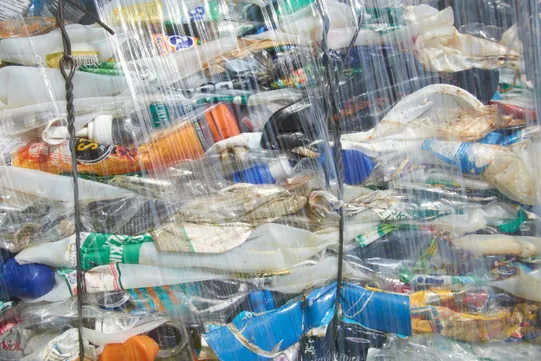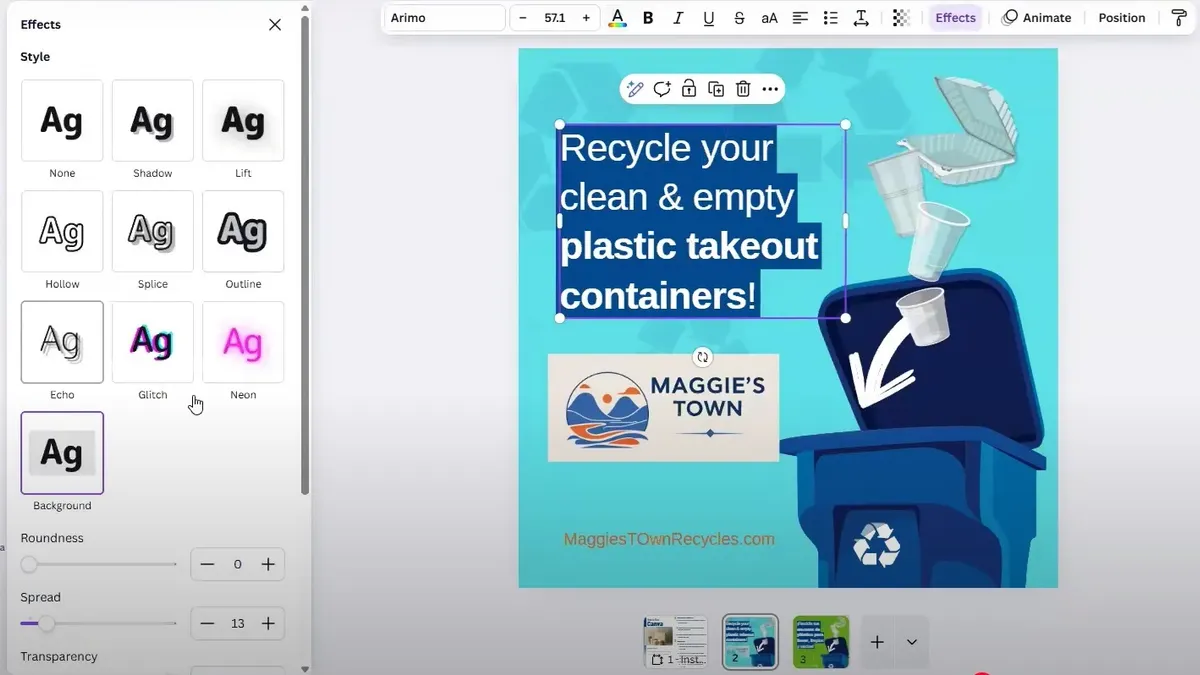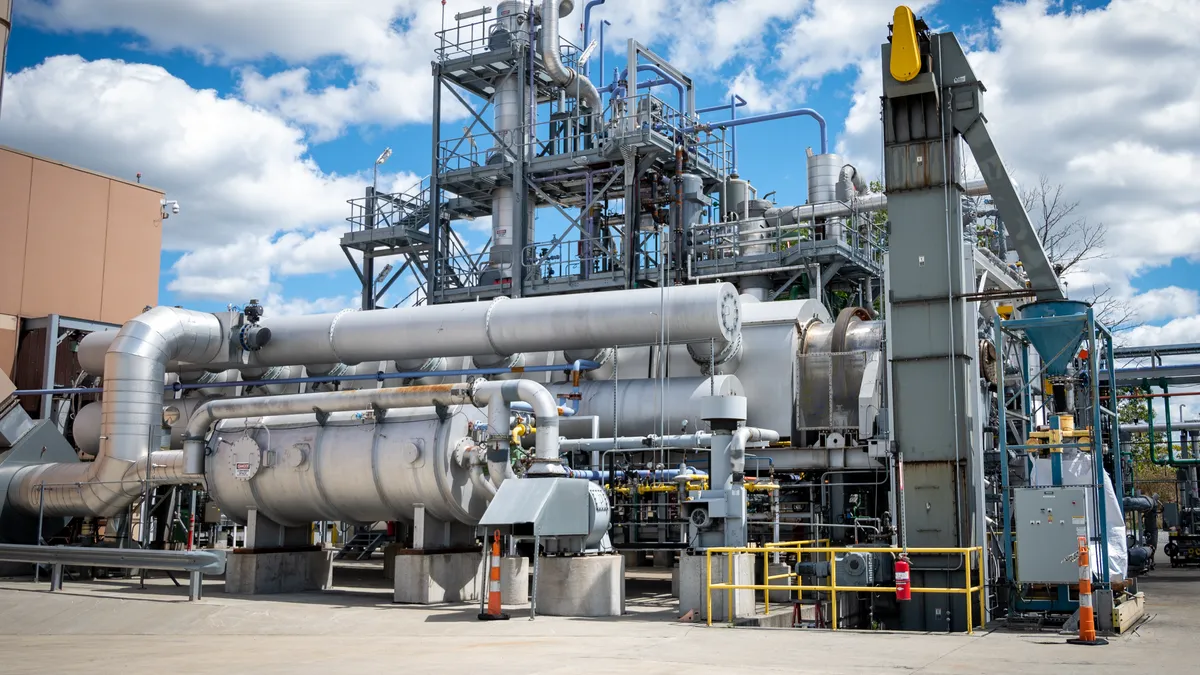As more brands ramp up demand for recycled materials, the Northeast Recycling Council is also putting a spotlight on strategies to increase recycled material supply.
Supply and demand challenges are a complex puzzle for stakeholders who are looking for the right balance of policy, brand buy-in and innovation to connect recycled content with end markets. NERC’s new “Guide to Increasing Recycling Supply” aims to offer real-world examples where state and local governments, private companies, MRF operators and nonprofits have been able to boost both the quantity and quality of recyclables.
“For many years, increasing demand for recycled materials has taken precedence over supply issues,” said NERC’s supply side committee, made up of members from WM, Tomra, ReMA and former NERC leaders. The guide is meant to be a “living resource that expands with additional case studies” as time goes on, organizers said in an email. Here are some key takeaways from the guide.
Better data, equipment and funding will help haulers and MRFs boost supply
MRFs and haulers that prioritize data collection will be able to gain better insight into how to ramp up sorting efficiency while identifying savings such as avoiding landfill tip fees, according to the guide.
NERC supports state policies that require haulers and MRFs to report data such as tonnage and type of recyclables collected, processed and sold. That information helps increase recycling transparency and creates realistic benchmarks to measure progress and set contamination targets.
Upgrades to “equipment, trucks and other supplies” are also a critical way to make operations more efficient and decrease contamination, which can lead to higher recovery rates and cleaner commodities, NERC said. Newer equipment often offers data-collecting capabilities that can help facilities meet data tracking mandates.
NERC prompts federal, state and local governments, as well as nonprofits, to support MRFs by offering grant funding for upgrading equipment. States should also encourage and support public-private partnerships or cooperatives that can more effectively invest in recycling collection infrastructure or strategies like hub-and-spoke aggregation, the guide says.
NERC highlighted Casella’s Boston-area MRF as an example of how upgrades can help achieve better recovery rates. The MRF reopened in July 2023 after a $20 million retrofit that added 60,000 tons per year of processing capacity to the New England region. The facility is projected to generate over 180,000 tons of recycled commodities this year, according to the case study.
The Casella case study points out that new technology such as robotics and artificial intelligence will help the facility “accommodate an evolving recycling stream while meeting market demand for high quality recycled commodities.” That will become more critical as producers ramp up recycled content targets and new markets for materials such as plastic bags or film plastics develop, NERC said.
State and federal policy boosts supply, local governments amplify results
Effective local, state and federal laws can help ensure recyclable materials are collected and sold to the right end markets, but only when effectively engaging with stakeholders and the community, NERC says.
Establishing extended producer responsibility programs and improved container deposit systems can generate meaningful collection increases, along with policies that ban recyclable materials from landfills and require universal access to recycling wherever trash collection is available, according to NERC.
Local governments play a major role in amplifying such recycling policies, NERC said. A case study on Prince George’s County in Maryland highlighted how the county increased recycling rates and reduced contamination through a mix of in-person outreach programs, meetings with haulers, an emphasis on bilingual messaging and increased visual inspections of recycling bins. Prince George’s County owns and operates its own landfill, organic compost facility and a MRF.
NERC pointed out other examples of how local governments can further recycling rates, such as establishing ordinances that enforce multifamily recycling. Municipalities can also invest in offering drop-off locations for hard-to-recycle items such as electronics, household hazardous waste, mattresses, textiles and tires, NERC said.
Recycling education and outreach is important throughout the value chain
When it comes to creating and maintaining effective education and outreach campaigns, it’s all hands on deck, the NERC guide says. That means coordinating between haulers, localities, brands, state guidelines and other stakeholders to deliver clear, personalized messaging that help residents recycle more effectively.
The NERC guide highlights several case studies to illustrate successful examples, including the Massachusetts Department of Environmental Protection’s statewide recycling education initiative known as Recycle Smart MA, which organizers say have helped reduce contamination.
The program features a “Smart Recycling Guide” with simple visuals of materials accepted by all Massachusetts recycling programs. A searchable “recyclopedia” helps users decide what bin a specific item can go in, while a Beyond the Bin program helps connect users with locations to donate unwanted items that are in good condition.
Meanwhile, MassRecycle’s case study highlights how the organization pushed back against misinformation about recycling as a “hoax” by engaging directly with media outlets and arranging public tours of MRFs.
Brands can continue to get involved by maintaining accurate recycling instructions on product labels and continuing to commit to designing products with recycling in mind, NERC said. For example, ReMA, formerly known as the Institute of Scrap Recycling Industries, developed a Fiber Recycling Readiness tool for brands, packaging companies and others in the industry to assess whether their packaging is likely to be recycled in current residential recycling systems.
This story first appeared in the Waste Dive: Recycling newsletter. Sign up for the weekly emails here.





















